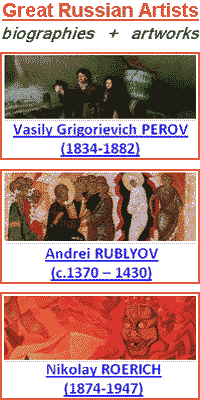Periods in the History of Old Russian Literature
The literature of Old Russia bears testimony to Russian life. This is why history itself to a considerable extent dictates the periods of literature. Literary changes coincide mainly with historical ones. What periods can we distinguish in the history of Russian literature from the eleventh to seventeenth centuries?
The first period in the history of Old Russian literature is that of the relative unity of literature, when literature developed mainly in two centres (connected by cultural links): Kiev in the south and Novgorod in the north. It lasted for one century, the eleventh, and included the beginning of the twelfth. This was the period of the formation of the monumental-historical style in literature, in which monumental forms were combined with important content, when it was felt that every event and every personage was connected with world history and with the whole of mankind. It was the period of the first Russian vitae, the Lives of SS Boris and Gleb and the monks of the Kiev Crypt Monastery, and the first Russian chronicle to have survived—The Tale of Bygone Years. It was the period of the united Old Russian Kievan-Novgorodian state.
The second period, from the mid-twelfth to the first third of the thirteenth century, saw the emergence of new literary centres in Vladimir-Zalessky and Suzdal, Rostov and Smolensk, Galich and Vladimir-Volynsky. During this period local features and themes appeared, the genres became more varied, and a strong topical and publicistic stream emerged in literature. This period marks the beginning of feudal disunity.
A number of features common to these two periods enable us to examine them together (particularly bearing in mind the difficulty of dating certain translated and original works). These first two periods are both characterised by a prevalence of the monumental-historical style.
Then comes the comparatively short period of the terrible Mongol invasion, followed by many long years of Mongol overlordship. This short period saw the creation of tales about the invasion of Russia by the Mongols, the battle on the Kalka, the capture of Vladimir-Zalessky, The Lay of the Ruin of the Russian Land and The Life of Alexander Nevsky. Literature concentrates on a single theme, but this theme manifests itself with unusual intensity, and the monumental-historical style acquires a tragic imprint and the lyrical fervour of deep patriotic feeling. This brief, but vivid period should be examined separately. It is easily distinguished.
The following period, from the end of the fourteenth to the middle of the fifteenth century, is the age of the Pre-Renaissance, which coincides with the economic and cultural rebirth of the Russian land in the period immediately preceding and following the Battle of Kulikovo in 1380. It is a period of the expressive, emotional style and profound patriotism in literature, a period of the rebirth of chronicle-writing, the historical tale and panegyric hagiography.
In the second half of the fifteenth century new phenomena appeared in Russian literature: translations of secular tales (fiction) began to circulate and original works of the same type, such as The Tale of Dracula and The Tale of Basarga, appeared. These phenomena were linked with the reformationist and humanist movements at the end of the fifteenth century. However, the insufficient development of the towns (which were centres of the Renaissance in Western Europe), the subjection of the Novgorod and Pskov republics, and the suppression of heretical movements impeded the advance towards the Renaissance. The conquest of Byzantium by the Turks (Constantinople fell in 1458), with which Russia had close cultural ties, left Russia isolated within its own cultural borders. The Florence-Ferrara Union of the Greek and Catholic churches, which was flatly rejected in Russia, created mistrust of the West and its culture. The organisation of a united Russian centralised state absorbed most of the people’s spiritual energy. Literature became increasingly publicistic: the domestic policy of the state and the transformation of society increasingly occupied the attention of writers and readers.
From the middle of the sixteenth century an official current becomes increasingly evident in literature. The period of “second monumentalism” arrived, which saw the production of impressive chronicles, lengthy chronographs, and a huge compilation of all the works read in Russia, known as The Great Menology. Traditional forms of literature dominated, suppressing the personal element that had begun to emerge in the age of the Russian Pre-Renaissance. The events of the second half of the sixteenth century produced by the despotic rule of Ivan the Terrible impeded the development of secular literature.
The seventeenth century is the century of the transition to the literature of the modern age. It is the century of the development of the personal element in everything: in the actual type of writer and in his work; the century of the development of personal tastes and styles, of literary professionalism and the sense of authorship, of individual, personal protest connected with tragic events in a writer’s biography. The personal element promoted the emergence of syllabic poetry and drama. It is from the seventeenth century that most Russian historians and Lenin date the beginning of the modern period in Russian history.1
https://www.soffitdesign.com stretch ceiling barrisol in dubai. History of Russian Literature
History of Russian Literature
